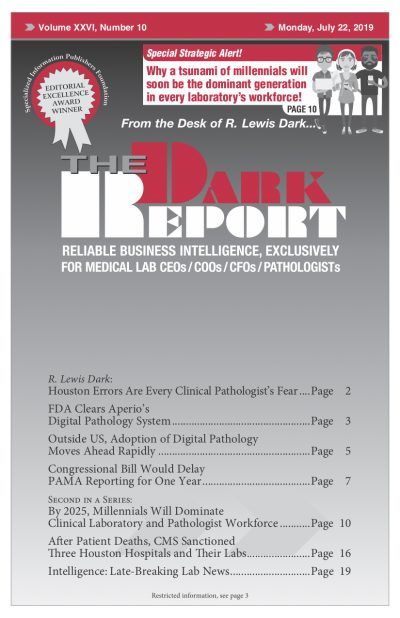CEO SUMMARY: Within five years, members of the millennial generation will make up 75% of the physician workforce in the United States, rising from about 24% in 2017. That three-fold increase represents a strong demographic trend that will require changes in the steps all clinical laboratories and pathology groups take when seeking to attract and …
By 2025, Millennials Will Dominate Lab, Pathologist Workforce Read More »
To access this post, you must purchase The Dark Report.


